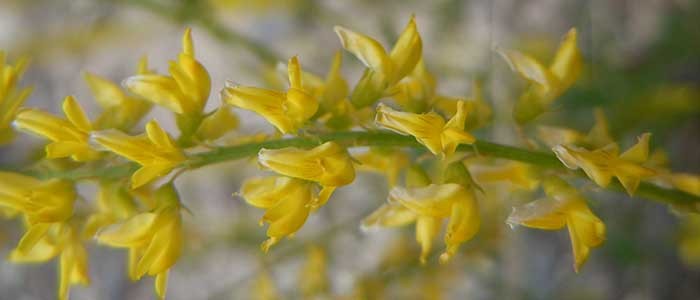-
 Turf Grass Seed Bluegrass, Bentgrass, Ryegrass, Fescues...
Turf Grass Seed Bluegrass, Bentgrass, Ryegrass, Fescues...
-
 Forage Seed Bromes, Clovers, Fescue, Wheatgrass, Legumes
Forage Seed Bromes, Clovers, Fescue, Wheatgrass, Legumes
-
 Grains Wheat Grain, Rye Grain
Grains Wheat Grain, Rye Grain
-
 Cover Crop Seed Buckwheat, Clover, Peas, Ryegrain
Cover Crop Seed Buckwheat, Clover, Peas, Ryegrain
-
 Wildflower Seed Mixtures, Singles, Annual, Perennial
Wildflower Seed Mixtures, Singles, Annual, Perennial
-
 Sprouting Seeds Fully certified Non-GMO Organic seeds for sprouts or microgreens
Sprouting Seeds Fully certified Non-GMO Organic seeds for sprouts or microgreens
Yellow Sweet Clover
Sweetclover thrives under a wide range of soil and climatic conditions. However, it will not tolerate acid soils. It is drought resistant, winter-hardy and productive throughout the Corn Belt south to the Gulf Coast. Quite alkali tolerant and even likes limestone soils. Because of its deep, heavy taproot and dense root system it opens subsoil and increase aeration, making it a valuable conservation tool. Root break down rapidly at maturity, adding organic matter to the soil. Sweet clover can be used for hay, silage, green manure or pasture. It is also one of the most valuable plants for honey production, often used solely for bee pasture.
Seeding rate 12 to 15 lbs/acre.
A large, biennial, coarse growing type, often attaining height of six feet. Too coarse at maturity for hay. Best for #003366 manure crop because of the amount of forage produced.
Seeding rate 12 to 15 lbs/acre.
Sweet clover thrives under a wide range of soil and climatic conditions. It will not tolerate acid soils, however. Drought resistant, winter hardy and produtive throughout the Corn Belt south to the Gulf Coast. Quite alkali tolerant, likes limestone soils. Because of its deep, heavy taproot and dense root system it opens subsoil and increases aeration, making it a valuable conservation tool. Roots break down rapidly at maturity, adding organic matter to the soil.
The first season’s growth of these large biennials consist of one central, many branched stem. The second year the crown buds start growth early, sending up many vigorous rapidly growing stems. Generally sweet clover is seeded for hay or silage in the northern tier of states, for #003366 manure or pasture in the Corn Belt, and for pasture in the south. In the Palouse region of eastern Washington and Idaho sweet clover / grass mixtures are used in rotation with cereal grains and peas to aid in halting soil deterioration.
It is one of the most valuable plants for honey production, often used solely for bee pasture.
Most unimporved strains contain large amounts of bound coumarin which gives new mown sweet clover its characteristic vanilla like aroma. When the plant tissues are chewed by animals, free coumarin is liberated, producing an unpalatable taste. Heating or spoilage of sweetclover hay or silage converts coumarin to dicoumarol, a toxic substance which reduces blood clotting time. Low coumarin varieties have been developed.

